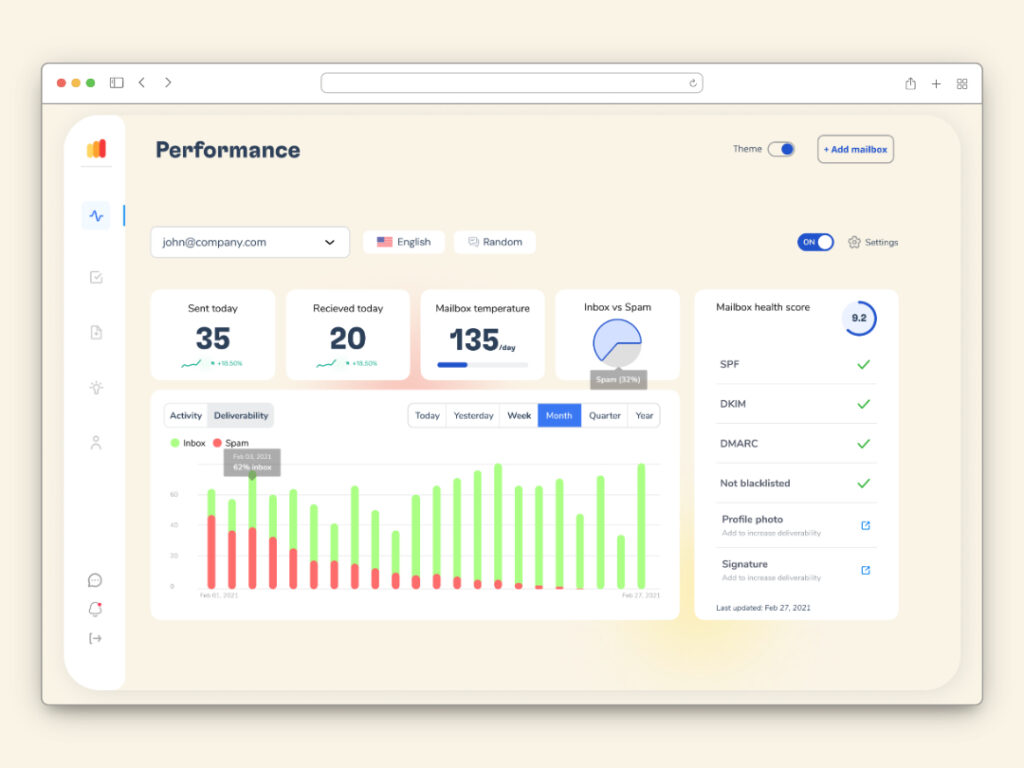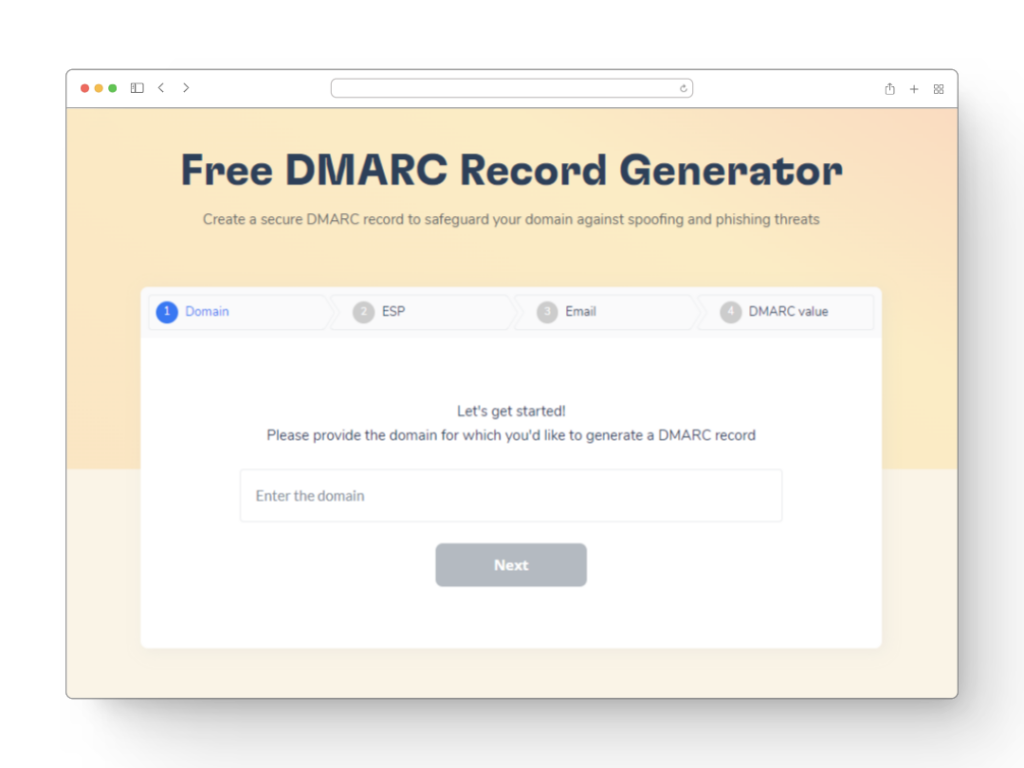Have you ever thought about why your properly written marketing emails get thrown in the spam folder or are never opened? You’re not by yourself. New data shows that almost 20% of real emails don’t make it to the inboxes of their intended readers. This can mean missed chances and lost money for companies that depend on email marketing.
This article explores the intricacies of email deliverability within GetResponse, one of the leading email marketing platforms in the industry. We’ll delve into the crucial role of email deliverability for your business success, examine common challenges faced by email marketers across all platforms, and highlight how GetResponse equips its users to optimize their email performance.
Are you ready to learn why your emails aren’t getting through and how to fix it? Let’s get started.
About Get Response

Get Response has been in the email marketing business since 1998, making it a well-known player in the field. It began as a simple email marketing tool and has evolved into a full marketing platform that companies all over the world use. Get Response provides more than just email marketing. It also provides automation, landing pages, workshops, and customer relationship management (CRM) tools.
Get Response is a market leader that works with companies of all kinds, from small startups to big companies. Its powerful features and easy-to-use design make it a popular choice among marketers who want to streamline their work and get better results from their campaigns.
Advanced email automation, customizable templates, thorough analytics, and the ability to divide users into groups are some of the most important features of Get Response. The platform’s adaptability lets users make campaigns that are more relevant to their audience, which leads to more involvement and sales. Get Response gives you the tools you need to reach your goals, whether you just want to send a newsletter or set up a complicated marketing automation workflow.
What is Email Deliverability Rate?
One cannot exaggerate the value of email deliverability. A high deliverability rate guarantees that your messages get to your audience, so influencing your marketing performance immediately. Should your emails fail to reach inboxes, all the work you have done creating engaging material and building appealing layouts is lost. Better engagement, more opens and clicks, and finally higher conversion rates follow from high deliverability rates.
Email deliverability is linked to several important measures, including bounce and inbox placement rates. The percentage of emails falling into the main inbox instead of the spam or trash bin is known as inbox placement rate. Conversely, bounce rate counts the proportion of emails – often resulting from invalid email addresses or full mailboxes – that might not have reached the recipient’s inbox.
Any effective email marketing plan depends on an awareness of and ability to maximize these measures.
How Do They Measure Numbers?
Get Response guarantees that marketers have a comprehensive knowledge of how their efforts are doing by measuring email deliverability using several approaches. Their measuring approach revolves on instruments and benchmarks meant to monitor email delivery’s success.
Get Response begins with highly advanced tracking systems that follow every email’s path. They track things like the inbox placement rate, which indicates the proportion of emails that wind up in the recipient’s primary inbox instead of being filtered into the spam or trash folders. Furthermore recorded is the bounce rate, which shows the proportion of emails missing their intended destination for reasons including invalid email addresses or full mailboxes.
Get Response also offers comprehensive open rate, click-through, and engagement level metrics. These indicators enable companies to know not only about the delivery of their emails but also the interaction of their content with the receivers. By use of data point analysis, marketers can hone their plans to enhance next campaigns.
One should be aware, nevertheless, that measuring techniques may vary. For instance, open rates depend on monitoring pixels that users could ignore or email clients could block, so they might not always be accurate. Analogous distortions of measures like click-through rates might result from automated bots or non-human interactions.
These possible differences emphasize the need of considering a whole picture of email delivery by combining several criteria. Although the tools of Get Response provide insightful analysis, marketers should keep in mind the constraints and always adjust their campaigns depending on a whole knowledge of their performance data.
Common Issues Affecting Email Deliverability
✅ Spam traps rank among the main problems. These are email addresses designed especially to identify spam emails. Should these traps catch your emails, your sender reputation may be seriously tarnished and you may find big email providers blocking your emails.
Related – What is a Spam Trap & How to Avoid It | Warmy.io
✅ Blacklists present still another major issue. Your emails will most certainly be filtered out as spam if your sending domain or IP address ends up on a blacklist. Companies that track email traffic and flag domains or IPs exhibiting unusual activity or high spam rates help to maintain blacklists.
Related – Top 10 IP Address Blacklist Removal Tools [Cons & Pros]
✅ Additionally detrimental to deliverability is a bad sender reputation. Your sending style and degree of participation help to build this reputation over time. Your sender reputation will suffer if you often send emails to invalid addresses or if your emails have low engagement rates, which will cause more of them to be classed as spam.
Related – From Good to Great: Factors That Affect Domain Reputation
✅ Making sure receivers’ email providers trust your emails depends on proper email authentication. Your emails may be denied or flagged as suspicious if you lack appropriate authentication mechanisms such SPF, DKim, and DMARC.
Related – SPF, DKIM, and DMARC: Boosting Email Security and Deliverability
✅ Still additional consideration are low engagement rates. Should receivers not open or interact with your emails, email providers will be informed that your material may not be value or relevant, therefore raising the possibility of your emails being filtered out.
Any company trying to maximize their email marketing initiatives and guarantee their communications are read by their intended audience must first understand and solve these typical deliverability problems.
Why the Numbers Are Not Accurate
When evaluating email marketing campaigns, it’s crucial to understand that not all deliverability metrics are created equal. Various factors can affect the reliability of these numbers, making it challenging to get an accurate picture of your email performance.
One of the most commonly used metrics is the open rate, which measures the percentage of recipients who open an email. However, open rates can be misleading for several reasons. Firstly, many email clients block images by default, which prevents tracking pixels from being loaded. Since open rates are typically tracked by a hidden image in the email, this blocking can result in underreporting.
False positives from bots also skew open rates. Many email clients and security tools use bots to scan emails for malicious content, and these scans can trigger false opens. As a result, your open rate might appear higher than it actually is.
Inconsistencies across email clients further complicate the accuracy of open rates. Different email clients handle emails and tracking mechanisms in varying ways, leading to discrepancies in how opens are recorded. For instance, an email might be marked as opened in one client but not in another, even if the recipient interacted with it.
Beyond open rates, other metrics can also be misleading. Click-through rates can be affected by similar issues, such as bots clicking links within emails. Bounce rates might not account for temporary delivery issues, leading to fluctuations that don’t accurately reflect the health of your email list.
In conclusion, while deliverability metrics are essential for tracking email performance, it’s important to recognize their limitations and potential inaccuracies. By understanding these factors and using a holistic approach to analyze email engagement, businesses can make more informed decisions and optimize their email marketing efforts.
Solving Deliverability Issues with Warmy.io

When it comes to solving email deliverability issues, Warmy.io stands out as a powerful tool designed to help businesses ensure their emails reach the intended recipients. The primary purpose of Warmy.io is to enhance sender reputation and improve overall email deliverability by gradually warming up email accounts. By simulating natural email interactions, Warmy.io helps to establish a positive sending reputation with email service providers, reducing the chances of emails being marked as spam.
Using Warmy.io brings numerous benefits. It not only increases the likelihood of emails landing in the inbox but also helps maintain a clean and healthy email list. This, in turn, boosts engagement rates and improves the effectiveness of email marketing campaigns. With Warmy.io, businesses can see a significant improvement in their email deliverability rates, leading to better campaign performance and higher conversion rates.
Features and Promotions of Warmy.io

Free Email Deliverability Test
Warmy.io provides a free email deliverability test that allows users to check where their emails are landing – whether in the inbox, spam folder, or elsewhere. This test also provides a deliverability score and identifies potential issues such as blacklist status and email authentication problems.
- How it works. The test sends a series of emails to different email providers and monitors the results to give a detailed analysis.
- Benefits. This diagnostic tool helps users understand and pinpoint deliverability issues, enabling them to take corrective actions.
Free SPF and DMARC Record Generator

Proper email authentication is crucial for improving deliverability. Warmy.io offers tools to generate SPF and DMARC records for free, ensuring that emails are properly authenticated and trusted by email providers.
Template Checker
This feature analyzes email templates for potential issues that could affect deliverability, such as spammy content or formatting problems.
Signature Builder
Create professional email signatures that help establish credibility and trust with recipients.
Mailbox Calculator
This tool helps users manage their email sending volume to avoid triggering spam filters.
Sequence Builder
Design effective email sequences that engage recipients and maintain high deliverability rates.
To further support businesses in improving their email deliverability, Warmy.io offers a 7-day free trial. During this trial, users can experience the full range of features and measure the performance enhancements firsthand.
- How to sign up. Signing up for the trial is straightforward. Users simply need to visit the Warmy.io website and register for the free trial.
- What to expect during the trial. Users will have access to all Warmy.io features, allowing them to run deliverability tests, generate authentication records, and more.
- Benefits. The trial period provides an opportunity to see the immediate impact of Warmy.io on email deliverability, helping users decide whether to continue with the service.
By leveraging the tools and resources provided by Warmy.io, businesses can effectively diagnose and resolve Get Response deliverability issues, ensuring their emails consistently reach their intended audience. This proactive approach not only enhances the success of email marketing campaigns but also contributes to building a strong sender reputation over time.
Conclusion
This post has looked at Get Response’s email deliverability problems and the reasons precise deliverability measurements are absolutely vital for effective email marketing campaigns. We covered typical issues such spam traps, blacklists, bad sender reputation, and inadequate authentication as well as the reasons open rates might not always be accurate.
Warmy.io provides a complete toolkit meant to raise sender reputation and increase deliverability in order to address these problems. Warmy.io offers useful tools to make sure your emails find their intended recipient including free deliverability testing, SPF and DMARC record generators, and a 7-day free trial.
Using these tools will help companies greatly improve email marketing performance and get higher engagement and conversions. Using Warmy.io might revolutionize those dealing with deliverability issues.
📜 Related articles:











